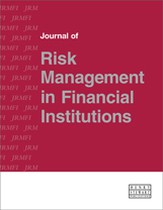Bank’s asset and liability management: A chief risk officer’s perspective
Abstract
The asset–liability management (ALM) function covers both a prudential component (management of all possible risks and rules and regulation) and an optimisation role (management of funding costs, generating results on balance sheet position) within the limits of compliance (implementation and monitoring with internal rules and a regulatory set of rules). As well as intervening in these aspects of current business activities, ALM is also consulted for organic development and external acquisition to analyse and validate funding terms options, conditions of projects, and any risks (ie funding issues in local currencies). For the sake of simplicity, treasury management can be covered and depicted from a corporate perspective by looking at the management of liquidity, funding and financial risk. ALM, on the other hand, is a discipline relevant to banks and financial institutions whose balance sheets present different challenges that must meet regulatory standards. For banking institutions, risk, treasury and ALM are interrelated and collaborate in managing liquidity, interest rate and currency risk at the individual and group level. ALM focuses more on risk analysis and medium- and long-term financing needs, while treasury manages short-term funding (mainly up to one year), including intraday liquidity management, cash clearing and crisis liquidity monitoring. ALM is concerned with the strategic management of the assets (uses of funds) and liabilities (sources of funds) of banks against risks caused by changes in the liquidity position of the bank, interest rates and exchange rates, and against credit risk and contingency risk. The author makes a modest attempt to provide a pragmatic view of the day-to-day ALM techniques used in managing the volume, mix, maturity, rate sensitivity, quality and liquidity of assets and liabilities as a whole so as to attain an acceptable risk/reward ratio. The purpose of this paper is to provide a perspective from a risk practitioner in enhancing asset quality, quantifying the risks associated with assets and liabilities, and further managing them in order to stabilise short-term profits, long-term earnings, and the long-run sustenance of the bank.
The full article is available to subscribers to the journal.
Author's Biography
Venkatesh Kallur is an international banker and risk management executive with a career spanning over three decades, with multiple regulatory regimes experience in North America, the Middle East and Indian markets, and a strong foothold in IFRS 9, credit, market and operational risk, as well as risk strategy and architecture. He is experienced in leading boardroom discussions in enterprise risk management subject areas. He is also a keynote speaker and vivid writer on risk subject areas in several international risk forums.
Citation
Kallur, Venkatesh (2016, October 1). Bank’s asset and liability management: A chief risk officer’s perspective. In the Journal of Risk Management in Financial Institutions, Volume 9, Issue 4. https://doi.org/10.69554/FOZQ9388.Publications LLP
